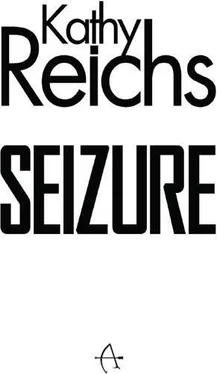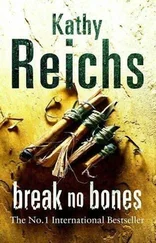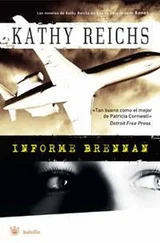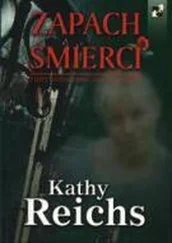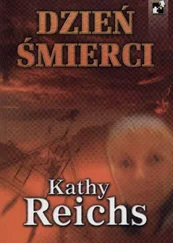The room was outsized and majestic, reflecting its past as a congregational hall. It made me feel very, very small.
“Mr. Stolowitski?” a prim voice called. “Is that you?”
“Yes, Dr. Short. Thanks for agreeing to see me on such short notice.”
A compact man, Short wore tweed pants and a blue wool sweater. Tiny round glasses rested halfway down his nose. Snaggletoothed, with thinning brown hair, the guy was no beauty.
Short’s lips twitched in what might’ve been a half smile. “To be honest, Hiram, I’m not sure I did agree. But, here you are.”
“Yes, well,” Hi stammered, “I’m sure you’ll find this interesting. Thanks again. Sir.”
“These are your friends?” Short dipped his shoulders in a slight bow. “Dr. Nigel Short. Assistant director, museum historian, and resident forensic document examiner.”
“Tory Brennan.”
“Shelton Devers.”
“Ben.”
“Shall we get to it?” Short gestured with perfectly manicured fingers. “Place the documents on the table, then please stand aside. I’ll be with you in a moment.” Turning on a heel, he strode in the opposite direction and disappeared through a doorway.
“He’s prickly, but everyone swears he’s the best,” Hi whispered. “Trust me.”
I laid out Bonny’s two-page letter, then a photocopy of a pair of lines from the treasure map:
Down, down from Lady Peregrine’s roost,
Begin thy winding to the dark chamber’s sluice.
“Anyone have a clue what ‘the dark chamber’s sluice’ might be?” Hi asked.
“One thing at a time,” I said. “Here comes your guy.”
Short was wearing white linen gloves and carrying a small bundle. Noting the photocopy, he frowned.
“What’s this? A reproduction ? You said the articles were originals.”
“We don’t have the second document,” Hi lied. “We had to print it off the net.”
Short peered over the rim of his spectacles.
“I don’t work with copies.” Curt. “Fine points can be missed. I won’t be able to authenticate.”
“We only need to establish the letter’s authenticity,” Hi said. “Not the copy. We brought that solely as a handwriting sample.”
We were pretty confident the map was real. After all, we’d stolen it from the Charleston Museum ourselves.
Short’s eyes narrowed. I worried he suspected deception.
Careful. This guy is sharp .
“Very well.” Short slipped a jeweler’s loupe from his bundle. “I may require more details in a moment. For now, please have a seat in the gallery. I’ll be with you as soon as I’ve reached a conclusion.”
We scurried to the pews as Short began poring over Bonny’s letter, nose inches from the parchment. For a full twenty minutes he ignored us completely.
A case of the yawns circulated. My mind was drifting when Short’s voice snapped me back to attention.
“Please return to the table.” Short scrutinized us, fingers steepled. “Where did you get this letter?”
“A pawnshop,” I replied. On this point, why not be honest?
“A pawnshop ?” Short looked offended. “Are you having fun with me?”
“No, sir. The letter was in a box of pirate junk at a store in North Charleston.”
“This correspondence is signed by Anne Bonny.” Short’s eyes gleamed. “Do you know who she was?”
Nods.
“I believe the document to be authentic,” Short said. “If so, this is an extraordinary find! To think where this letter has been, how it made its way to you.”
My stomach did a backflip. If the letters were genuine, the clues might be too!
“Bonny writes that she’s imprisoned in a Charles Town dungeon,” Short went on. “That fact has never been proven before. Remarkable!”
“We know,” Ben said.
“Why were you rooting through pirate paraphernalia in a North Charleston pawn—” Short changed gears. “These lines you photocopied. What are they from?”
“Something we found online.” Back to lying. “Her diary, I think.”
“You are certain Anne Bonny wrote this?”
“The, uh, website said so.”
“Because if that verse was written by Anne Bonny, then the letter is almost assuredly genuine.”
“How can you be sure?” I asked.
“The penmanship.” Short adopted a lecturing tone. “A person’s handwriting is as unique as his or her fingerprints. Experts such as I can compare features on different samples to match or exclude a suspected author, even if that author tries to disguise his or her hand.”
“So Bonny wrote both?” Hi asked.
“Let me clarify,” Short said. “These items were penned by the same hand. The letter is signed, ‘Anne Bonny.’ You’ve assured me the verse was written by Ms. Bonny as well.”
“The letter’s not a fake?” Ben’s shock was obvious.
“If it’s fake, it’s a masterpiece. The paper, ink, and style are all appropriate for the era. Without scientific testing, I can’t be one hundred percent certain, but I’m reasonably confident the letter is authentic.”
“Can you explain how you determined that the handwriting matches?” I asked.
“Very well.” Short pointed to the letter’s first page. “Antiquated cursive, typical of the early seventeenth century. That is clear right off. I compared individual letters—and connections of letters—to those in the copy. There were notable similarities.”
“Do you need the exact same words?” Hi asked.
“That’s helpful, but not required. Examining single letters, letter groupings, or even mere capitalization works almost as easily.”
“Here.” Short scribbled on a notepad, then handed it to me. “Write this sentence.”
I did. Read the words aloud. “The quick brown fox jumps over the lazy dog .”
“That inane little sentence uses every letter in the English alphabet,” he explained. “It’s the perfect control.”
“Control?”
“For comparison. For example, if the police can persuade a suspect to write those words, I can compare them to, say, a ransom note, or a shopping list. If the same person wrote both, I’ll know.”
“That’s what I did today.” He turned to the documents. “First, I examined vowels such as o , a , and e .” Checked whether the loops are open or closed. See how the letter o has a minor swirl at the top in both writing samples?”
“Yes,” I said. “Neat.”
“Next, I compared characters like f , b , and l , which extend upward. Conversely, letters such as p and q extend downward.”
“Sounds difficult,” Hi said.
Short looked pleased. “Sometimes other features are more informative, such as whether the author points or rounds off letters like s , n , or m . I also gauge the slant of the writing.”
“And the letter and poem match?” I wanted to be perfectly clear on this point.
“Absolutely,” Short said. “Look at the capital L , both here in Lady , and here, with Last . The author uses a rare formulation.”
“You mean the large circle at the apex?”
“Precisely. And, even more oddly, the author combines t and h when grouped together, as with the word the . To me, that might as well be DNA.”
“Hey Tor.” Hi was holding my writing sample. “You’ve got the same quirk.”
“Huh?”
Short laid my sentence beside Bonny’s poem and letter. “Well, Miss. How about that.”
Hi was right. I’d never noticed before, but I combined th into a single character, almost like a Chinese symbol.
Читать дальше
